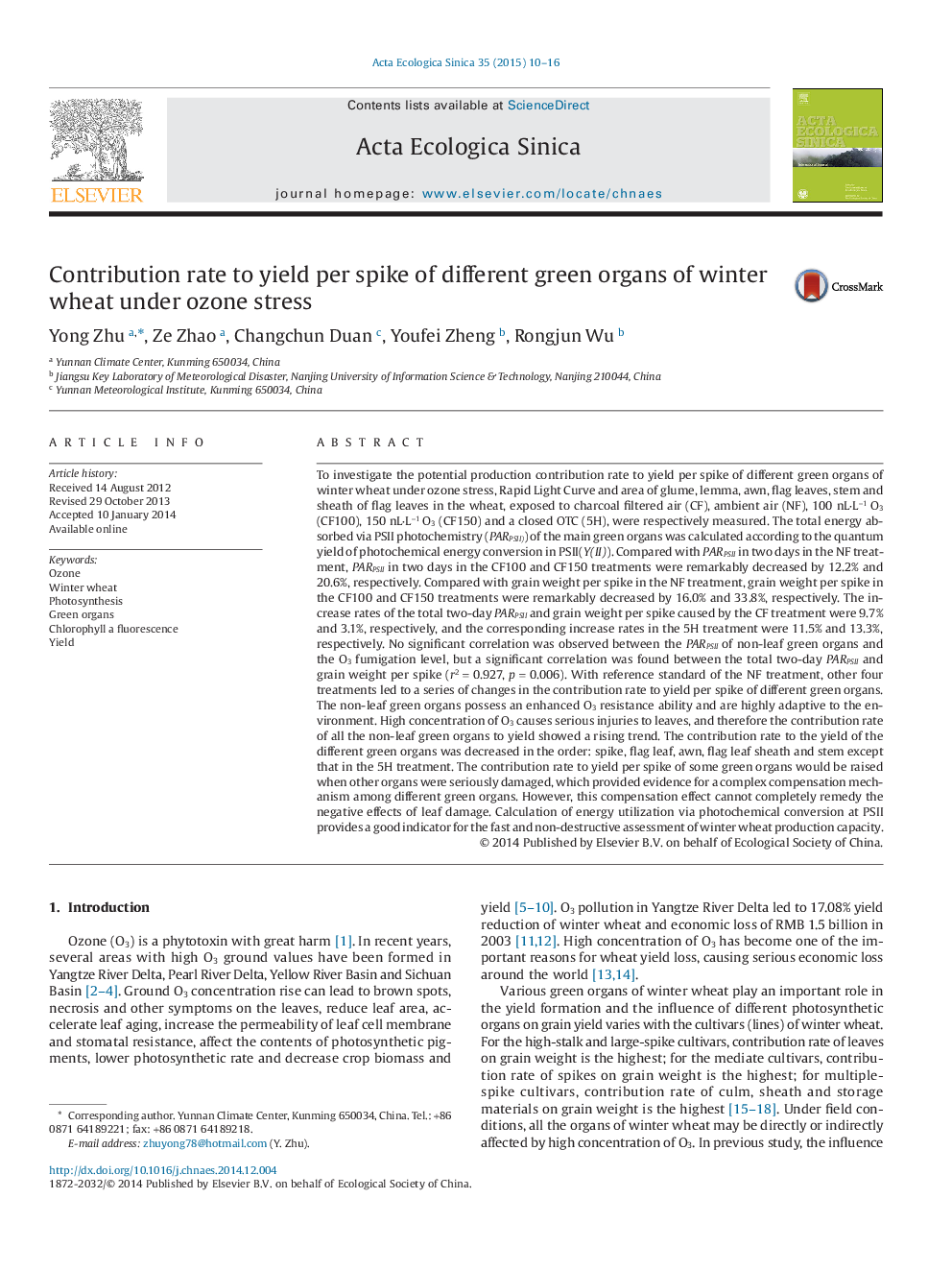| Article ID | Journal | Published Year | Pages | File Type |
|---|---|---|---|---|
| 4379817 | Acta Ecologica Sinica | 2015 | 7 Pages |
To investigate the potential production contribution rate to yield per spike of different green organs of winter wheat under ozone stress, Rapid Light Curve and area of glume, lemma, awn, flag leaves, stem and sheath of flag leaves in the wheat, exposed to charcoal filtered air (CF), ambient air (NF), 100 nL⋅L−1 O3 (CF100), 150 nL⋅L−1 O3 (CF150) and a closed OTC (5H), were respectively measured. The total energy absorbed via PSII photochemistry (PARPSII)) of the main green organs was calculated according to the quantum yield of photochemical energy conversion in PSII(Y(II)). Compared with PARPSII in two days in the NF treatment, PARPSII in two days in the CF100 and CF150 treatments were remarkably decreased by 12.2% and 20.6%, respectively. Compared with grain weight per spike in the NF treatment, grain weight per spike in the CF100 and CF150 treatments were remarkably decreased by 16.0% and 33.8%, respectively. The increase rates of the total two-day PARPSII and grain weight per spike caused by the CF treatment were 9.7% and 3.1%, respectively, and the corresponding increase rates in the 5H treatment were 11.5% and 13.3%, respectively. No significant correlation was observed between the PARPSII of non-leaf green organs and the O3 fumigation level, but a significant correlation was found between the total two-day PARPSII and grain weight per spike (r2 = 0.927, p = 0.006). With reference standard of the NF treatment, other four treatments led to a series of changes in the contribution rate to yield per spike of different green organs. The non-leaf green organs possess an enhanced O3 resistance ability and are highly adaptive to the environment. High concentration of O3 causes serious injuries to leaves, and therefore the contribution rate of all the non-leaf green organs to yield showed a rising trend. The contribution rate to the yield of the different green organs was decreased in the order: spike, flag leaf, awn, flag leaf sheath and stem except that in the 5H treatment. The contribution rate to yield per spike of some green organs would be raised when other organs were seriously damaged, which provided evidence for a complex compensation mechanism among different green organs. However, this compensation effect cannot completely remedy the negative effects of leaf damage. Calculation of energy utilization via photochemical conversion at PSII provides a good indicator for the fast and non-destructive assessment of winter wheat production capacity.
